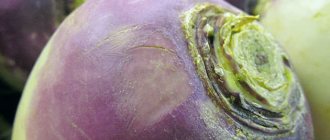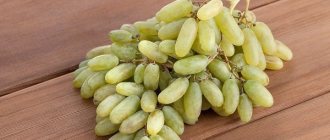In which countries is buckwheat grown?
Where does buckwheat grow in the world? As mentioned above, this crop began to be grown approximately four thousand years ago in India. Buckwheat seeds reached Russian fields much later. They were brought in around the seventh century. Now almost half of the world’s buckwheat harvest comes from Russia. This crop is grown in large quantities in several other countries: Belarus, China and Ukraine.
Buckwheat is sown in small quantities in several other countries. For example, in the USA, Tanzania, Poland, France and some other countries. In ancient times, buckwheat was sown in England and Wales, but attitudes towards it have changed long ago. It began to be considered a fodder crop. And therefore, in the UK, buckwheat is no longer grown at all.
Features of buckwheat seeds
In Latin, buckwheat is fagopurum. Translated, it means “beech-like nut.” This strange name comes from the shape of its grains - they look like beech fruits. That is why Western Europeans also call it “beech wheat.” Buckwheat fruits are small triangular nuts covered with a dense shell. Inside each grain there is a core with a root and two folded cotyledons. The weight of 1000 seeds ranges from 20 to 45 g (depending on the variety).
Check out the use of buckwheat as a green manure.
When the fruits germinate after sowing, their cotyledons emerge on the soil surface in the form of two false leaves. Further, the formation of the plant continues from the bud located between them. People have learned to eat various forms of buckwheat fruits. Most prefer whole kernels, others prefer crushed grains (prodel). There are also fans of crushed buckwheat (Smolensk groats) or buckwheat flour.
Types of buckwheat
The most popular varieties of buckwheat in Russia are the following:
- Bogatyr;
- Kazansky;
- Bolshevik;
- Terekhovsky;
- Slav.
Important! When buying buckwheat in a store, it is better to choose unroasted grains. They have a light yellowish tint.
Cultivated buckwheat (Fagopyrum esculentum Moench) has two varieties:
- Ordinary (vulgare).
- Multi-leaved (multifolium).
In addition to the cultivated species, there is also a weed species (Tatar).
Interesting facts about Greek
This culture is absolutely not afraid of weeds. And in agriculture, such a plant is the only one. Where buckwheat grows, there are practically no weeds. It suppresses them, displaces them, destroys them in the very first year as soon as it was sown. And on the second, weeds don’t grow at all. And a person doesn’t even need to do weeding.
How does buckwheat grow? Despite the fact that it is quite capricious to temperature changes and cold weather, it is almost not demanding on the soil. The only condition is that the soil be moist.
Buckwheat is not a grain. This is a plant from the rhubarb family. In Europe, buckwheat is not known in all countries. For example, in stores in many countries it is sold in small bags of two hundred grams with annotations about its properties and methods of preparation.
Buckwheat husks are sometimes used as a filler for orthopedic pillows. They can be found in many stores in the People's Republic of China, South Korea and Japan. You can also make orthopedic pillows at home yourself.
Relevance:
September 2010
An article devoted to the analysis of the buckwheat market in Russia in 2009-2010.
- World buckwheat market
- Growing buckwheat in Russia
- Production of buckwheat in Russia
- Russian foreign trade market of buckwheat
- Results
Buckwheat, also called buckwheat, is a grain made from buckwheat. Buckwheat is native to forest glades in the Himalayas, where it can still be found in the wild at an altitude of more than 3,500 meters.
Buckwheat porridge is considered one of the healthiest porridges. This is due to the fact that buckwheat contains essential nutrients: proteins, fats, carbohydrates, as well as calcium, phosphorus, iodine, vitamins B1 and B2, PP (rutin, which is obtained industrially from buckwheat). In addition, buckwheat contains many iron salts, citric and malic acids, which are catalysts for food absorption.
World buckwheat market
The annual harvest of buckwheat in the world is approximately 1.5 million tons, of which half comes from Russia and other CIS countries.
Global import volumes of buckwheat fluctuate from year to year. In 2009, more than 120 thousand tons of this cereal were imported into the world.
Dynamics of buckwheat imports in the world in 2001-2009, thousand tons
The main importers of buckwheat in 2009 are Japan, France and Italy. The main suppliers of buckwheat to Japan are China, the USA and Australia. The share of these countries in January–September 2010 exceeds 95%.
Share of countries that purchase buckwheat in world imports in 2009,%
Worldwide buckwheat exports in 2009 exceeded 130 thousand tons. Annual export supplies of buckwheat, as well as imports, do not have a clearly defined trend. However, over the past 5 years, annual export volumes have become more stable.
Dynamics of buckwheat exports in the world in 2003-2009, thousand tons
The leading exporters of buckwheat in 2009 are China, the USA and Poland. In world exports, these three countries account for more than 70%, of which China accounts for 45%, the United States - 21%, and Poland - 5%.
The Russian Federation ranks 11th in the world ranking of buckwheat exporting countries in 2009, in addition to the leaders, behind such countries as Portugal, the Netherlands, Latvia, and Ukraine. In 2009, there were no imports of this cereal to Russia. Taking this fact into account, our country is in 82nd place in the ranking of buckwheat importing countries.
Growing buckwheat in Russia
Buckwheat in Russia is a national product. It has been grown in our country for more than two thousand years. At the end of the 19th - beginning of the 20th centuries in Russia, buckwheat occupied 2% of all arable land (more than 2 million hectares), while the harvest amounted to 73.2 million poods (1.2 million tons of grain). Over the past 9 years, the area under buckwheat has decreased by more than 70%.
Sown areas and gross harvests of buckwheat in Russia in 2001 – 2009.
In 2009, the area under buckwheat was 932.1 thousand hectares, and in 2010 (as of November 9) - 569.4 thousand hectares.
The volume of gross harvests also fluctuates in proportion to the size of the sown areas: a reduction in area leads to a decrease in buckwheat yield. In 2009, the gross harvest of buckwheat amounted to 564 thousand tons, in 2010 (as of November 9) - 372.3 thousand tons. It should be noted that despite the significant difference in the size of the sown areas from 2001 to 2009, the gross harvest of buckwheat remained virtually unchanged: in 2001 - 573.981 thousand tons, in 2009 - 564.04 thousand tons. This is explained by an increase in the yield of this culture. Buckwheat yields have increased since 2001 by almost 2.5 times compared to 2008: 3.6 c/ha versus 8.3 c/ha.
As for the yield per harvested area, it is decreasing: in 2009 compared to 2008 - by 10%. As of November 9, 2010, it was 6.6 c/ha.
Production of buckwheat in Russia
The production of buckwheat from buckwheat has a positive trend. From 2001 to 2009, it increased by more than 17%. From July 2010, a decline in buckwheat production began: in July 2010, buckwheat production decreased by 45% compared to July 2009, in August 2010 compared to August 2009 year - 54%, in September 2010 compared to September 2009 - 35%. Already in July it became clear that the drought would have a negative impact on the buckwheat harvest. Usually the buckwheat harvesting work begins in September, but this year due to the drought it began in August.
Noticing the emerging trend, buckwheat producers were forced to reduce its production.
Buckwheat production in 2009 – September 2010, thousand tons
In the current situation, rising prices are a natural consequence of a decrease in production and, accordingly, supply on the buckwheat market. In January 2010, there was a slight decrease in average producer prices for buckwheat - by 1.2% compared to January 2009. A slight increase in prices began in February. A sharp jump occurred in July 2010: average prices for buckwheat increased by almost 20%. And in September 2010, compared to September 2009, the price increase was more than 55%.
Dynamics of average prices for buckwheat producers in 2009 – September 2010, rub./t
The increase in average consumer prices for buckwheat has been many times greater than the increase in average producer prices for buckwheat. In January-February 2010, a slight decrease in prices can be observed - by 3% on average. Since March 2010, prices began to rise. In October 2010, the average price in Russia for 1 kg of buckwheat reached 63.48 rubles, while in October 2009 it was 26.87 rubles. The average consumer price for 1 kg of buckwheat increased 2.4 times.
Dynamics of average consumer prices for buckwheat in 2009 – October 2010, rub./kg
Domestic rail transportation of buckwheat in January-September 2010 decreased by 22% compared to the same period in 2009. The top three sending regions are the Orenburg region, Altai region and Samara region. These regions account for more than 90% of the total volume of transported buckwheat. The main regions receiving buckwheat by rail are the Voronezh and Chelyabinsk regions, whose share in the total volume of rail transportation is 87%. This is explained by the fact that one of the largest food companies is located in the Chelyabinsk region, which includes CJSC KHP Zlak and LLC Resurs. JSC Hercules is located in the Voronezh region. The company specializes in the production of buckwheat, oatmeal and Hercules flakes. In addition, the company is engaged in the acceptance, drying, processing, storage and distribution of grains, cereals and oilseeds and corn.
Where does buckwheat grow in the world?
It is believed that modern cultivated fagopurum was bred in the 13th–14th centuries by the inhabitants of Northern India, Tibet, and Nepal. Then it appeared in southwest China. Its wild species still grow there. The Chinese brought it to Korea and Japan. Later it came to Central Asia, the Middle East and the Caucasus. Europeans began to practice buckwheat cultivation after the Tatar-Mongol invasion.
You might be interested in knowing where buckwheat comes from.
Cultivated varieties are now grown all over the globe. They serve not only as a source of valuable cereals, but also flour, feed and honey plants. In Russian conditions, the highest yield of this crop is observed in forest-steppes and Polesie. A lot of buckwheat is sown in Altai, Bashkiria, Stavropol, Primorye, and Krasnodar Territory. It also grows in black earth regions: Tula, Kursk, Oryol, Lipetsk.
History of buckwheat in Rus'
to the territory of Russia around the 2nd century AD from Byzantium. And now with us it has acquired the name “buckwheat” or “buckwheat”; it is believed that the culture received this name due to the fact that it came to Byzantium from Greece and then it was brought from there, where it was grown in large quantities by Greek monks.
Buckwheat in Russia is already mentioned in such a scripture as “The Tale of Igor’s Campaign . This was the first written confirmation that buckwheat was already the favorite porridge of the Slavs.
But excavations discovered earlier confirmation that the Slavs ate this porridge. During excavations at Scythian settlements on the territory of Ukraine, namely on the territory of the Donetsk settlement, vessels with buckwheat grains were found. And closer to modern Kharkov, burnt grains were discovered; the age of these grains also dates back to approximately the 2nd century AD.
Already in the 15th-17th centuries, Russia grew the largest amount of buckwheat , especially a lot of it was grown in Ukraine, where the soil and weather conditions were most suitable for it. In the 20th century, Ukraine became a leader in the cultivation of buckwheat; slightly less buckwheat is grown in Russia.
How does buckwheat grow?
For good development of the fagopurum culture, moderate heating of the air and soil is important. Temperatures above +30°C have a negative effect on it. She also needs sufficient lighting. Buckwheat is not capricious, but it is most comfortable in the forest-steppe zone with loose, light soil.
It is preferable if the following crops previously grew in the fields:
- wheat or other winter crops;
- beans;
- row crops: corn, millet, sugar beets, sunflower;
- soybeans and peas.
Did you know? Japan imports the most buckwheat. Here they even learned how to make noodles from it.
How to fertilize buckwheat
Unlike cereals and other cereal crops, buckwheat has a large vegetative mass. Only an experienced agronomist can grow a good harvest of this crop. It is very important to fertilize the plant in time. During the growth of the crop, it is necessary to apply mineral fertilizer. At this moment, she needs potassium fertilizers. Nitrogen compounds also increase the vegetative mass of the plant. Phosphorus and nitrogen are added carefully at the time of flowering in a 1:1 ratio.
Video: feeding buckwheat during the growing season
How it blooms
Fagopurum begins to bloom in June and the fruits ripen at the end of August. The color of the flowers can be different: white, pink, reddish. After sowing, seedlings appear when the air warms up to +15°C. The bushes initially grow rapidly in the form of straight stems. Then they branch and change color from green to red. It is impossible to say the exact time when buckwheat blooms. Flowering begins when the temperature reaches around +25°C, approximately 28 days after germination. Due to cold weather, this process may be delayed. If frost appears when the flowers bloom, this can completely destroy the crop.
The lower flowers open first, then the upper ones. There can be up to 1000 of them on one plant. Any of them blooms for only a day. All of them are collected not in a spikelet, but in a brush.
How to get buckwheat
Buckwheat flowering lasts a long time: some buds wither and begin to ripen, others are just blooming. It is impossible to wait for all the brushes to mature completely. Harvesting begins when the lower grains ripen and turn brown. It is important that by the time of harvest, 3/4 of the seeds in the field have matured. To ensure that the fruits fall off less during harvesting, you need to accurately select the moment of mowing.
Important! It is best to plant buckwheat near bodies of water. Also, the field should be protected from the winds by trees.
Harvesters start working in the morning or in the evening after sunset. At this time, the air is more humid, which allows the seeds to be less damaged. Modern technology immediately processes the kernels from the husk. Fruits are most often collected from September 20 to 30. The resulting grain is sorted and sent to warehouses. The harvest is sorted: one part goes to future sowing, the other to consumers.
The benefits and harms of buckwheat
It is worth extracting buckwheat not only because it is nutritious, but also benefits the body.
- It has a positive effect on the following diseases:
- Hypertension, atherosclerosis, edema, liver problems.
- Preparations based on it heal wounds, increase the elasticity of blood vessels, and eliminate the symptoms of measles, scarlet fever, and radiation sickness.
- Green buckwheat helps fight arthritis, rheumatism, and vascular diseases.
- The organic acids it contains improve digestion.
- Regular consumption of buckwheat porridge improves the functioning of the pancreas, improves metabolism, and eliminates heartburn.
- Recommended for increasing hemoglobin in anemia.
- Dressings made from heated cereal are recommended for use for boils, abscesses, and boils.
- Buckwheat flour is used as baby powder against diaper rash.
Important! For lung disease, it is useful to brew buckwheat tea. 40 g of dry petals per 1 liter of boiling water is enough.
It is contraindicated to consume buckwheat in large portions for gastritis, gastric and duodenal ulcers. Pregnant and breastfeeding mothers also need to be careful to avoid bloating. Individual intolerance to the product is rare.
Where and how is buckwheat used?
Buckwheat is one of the few plants that could not be modified at the genetic level. Nature has made sure that it can be grown without any growth stimulants or other pesticides. Buckwheat is an environmentally friendly product, therefore it is often used for cooking and in folk medicine.
After processing the seeds, the husks are used to stuff orthopedic pillows and mattresses.
Honey collection
Beekeepers really appreciate the healthy buckwheat honey. Fagopurum flowers are excellent honey plants. It is important that the weather be favorable at this moment. Flowering brushes emit a wonderful aroma, which attracts bees. From one hectare of flowering field, these insects can collect up to 200 kg of honey. The fresh product is brown in color, and after three months it crystallizes.
Did you know? People learned to cultivate buckwheat in the 3rd century BC. e. The Nepalese and Indians called it “black rice”.
Its taste is a little tart and causes a slight soreness and burning sensation in the throat. In mid-June, hives are installed around the perimeter of the sown field. In addition to collecting honey, bees also benefit the plant itself, pollinating it and increasing the buckwheat yield by up to 60%. Beekeepers pump buckwheat honey at the end of July.
Use in food
The most common dish made from buckwheat is porridge. It is not only boiled, but also poured with boiling water and infused with kefir and yogurt. Honey, nuts, and fruits are added to the porridge. It goes well with vegetables. Many people have loved buckwheat soup since childhood. Recently, cutlets with this grain - buckwheat - have become popular. Quite often, supermarkets sell bread made from a mixture of buckwheat and wheat flour. Pancakes, pancakes, flatbreads, and dumplings are baked from it.
We recommend reading about the benefits and harms of buckwheat and kefir.
The French and British prepare thin buckwheat pancakes - crepes. And in Japan, buckwheat flour is considered a traditional and very characteristic national product. It is used to make tender soba noodles. The Swiss and Italians also produce buckwheat pasta. In some Asian countries, it is common to use green shoots and leaves of buckwheat for salads, marinades, and seasonings for meat.
Application
The main use of buckwheat is food. The grain is transported to cereal factories. The material is processed there. The grains have to be cleaned, divided into fractions, and husked. Then it undergoes hydrothermal treatment. You don’t have to do it, but then the grain turns out white.
There are popular brands of grain, for example, Altai buckwheat . Processed buckwheat is packaged or sent for the production of other products, for example, flour or cereals such as:
- nucleolus, in which large nuclei are stored
- Smolensk, where buckwheat grains are heavily ground
- made from crushed buckwheat
Buckwheat flour is used only in a mixture with others, since it is gluten-free. Without it, there is nothing to glue the products together. Buckwheat flour is a component of pancake dough and pancakes, dumplings, and flatbreads.
You can also cook a Japanese dish - soba noodles. It has been made in the Land of the Rising Sun for 4 thousand years. Russians like to make soba with chicken and zucchini, or with champignons and carrots. They also recommend a recipe with mushrooms and sesame seeds. Need to:
- Boil 300 grams of soba for 7 minutes and rinse with cold water.
- Make a sauce from honey, soy sauce, red pepper.
- Cut the mushrooms into slices and fry in oil.
- Pour the sauce into the prepared mushrooms and add garlic powder.
- Simmer the mushrooms for a couple more minutes, then add the soba and sesame seeds.
- Stir and let stand for 5 minutes.
- Serve hot or chilled.
Bees are the main pollinators of buckwheat and produce buckwheat honey.
In southeast Asia, buckwheat grains are not the only food eaten. The leaves and shoots of the plant are also eaten. They become an ingredient in salads, sauces, and soups. Fresh buckwheat greens are poisonous. Therefore, before adding to dishes, Asians dry the grass.
Outside the food market, the heroine of the article is also used. After cleaning the grains, for example, buckwheat husks . This hard shell is buckwheat waste . It is suitable for boiler fuel, land fertilization, and livestock feed. Buckwheat husks are also used to stuff pillows and other bedding, for example, mattresses. The advantages of the filler are as follows:
- does not cause allergies
- smells nice
- does not accumulate static electricity
- not suitable for ticks
- serves as a prevention of musculoskeletal diseases
The husk should be checked for quality by crushing it in the palm of your hand. The husk should not color easily. The clear, tetrahedral shape of the husk is also important. It remains to mention the medicinal properties of buckwheat. Its greens have expectorant, anti-sclerosis, antibacterial and hypotonic effects.
Buckwheat lecithin is useful in preparations and folk remedies against diseases of the liver and heart, nervous system, and type 2 diabetes. Ointments against skin ailments are also made from buckwheat greens. The heroine of the article strengthens the dermis, that is, the middle layer of the skin. Another positive effect is noted on hair and nails.
Folic acid contained in buckwheat promotes a successful pregnancy and strengthens the immune system. This is relevant during pandemics, for example, the influenza virus. Despite all the advantages, the heroine of the article has a contraindication. This is increased blood clotting.
Gardeners and gardeners use buckwheat to improve and enrich the soil, as green manure.
Buckwheat husks are used to stuff pillows, blankets and mattresses











